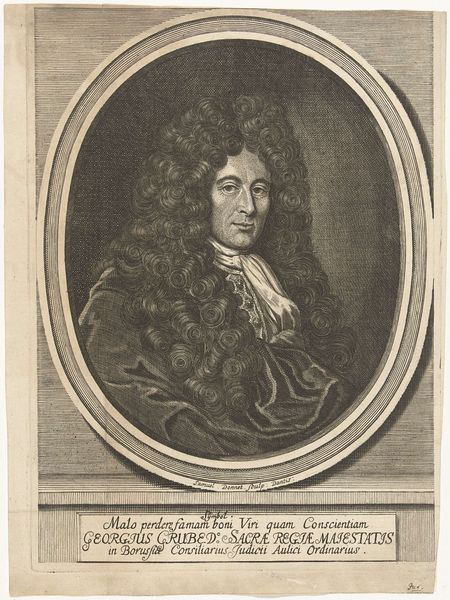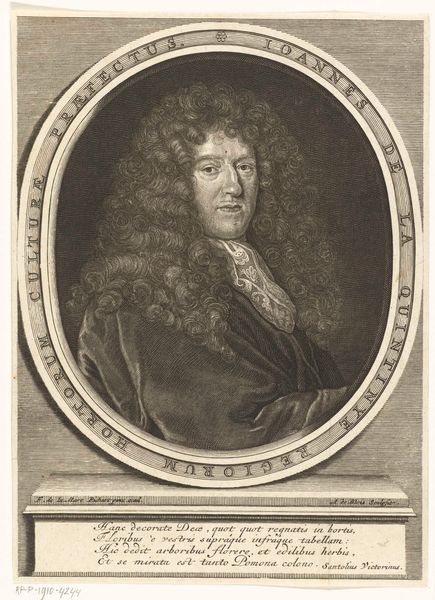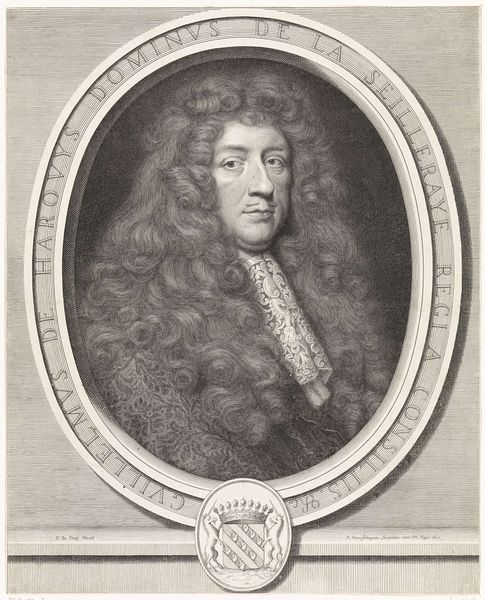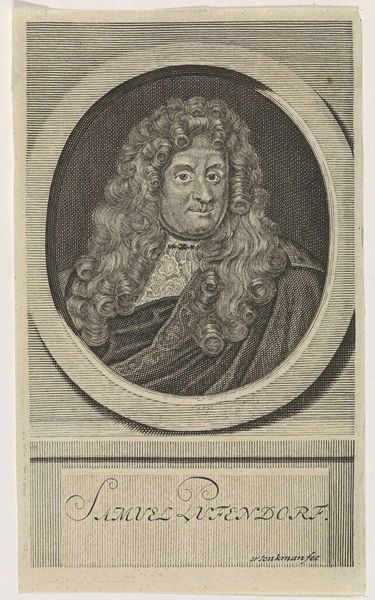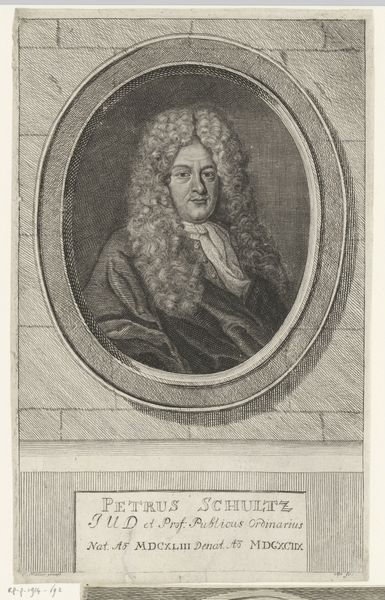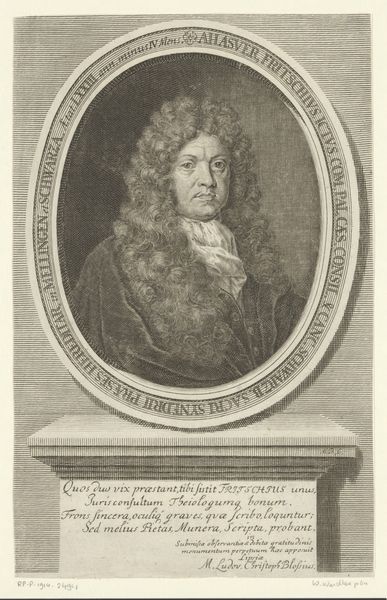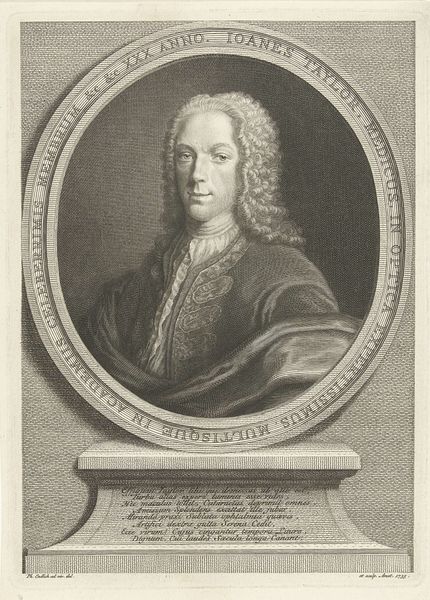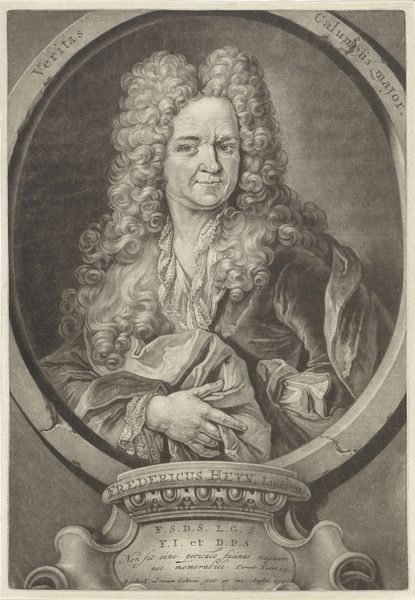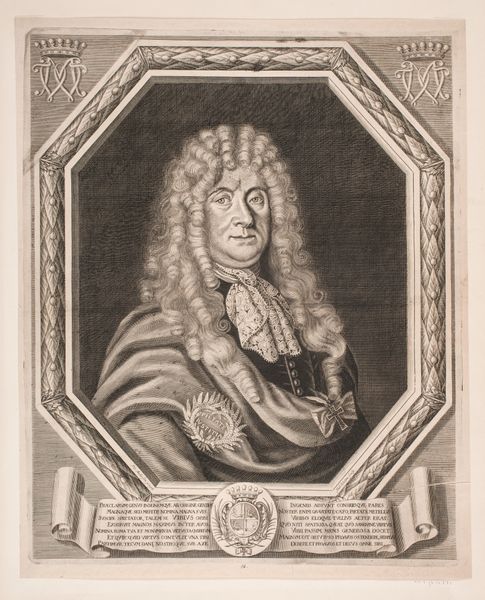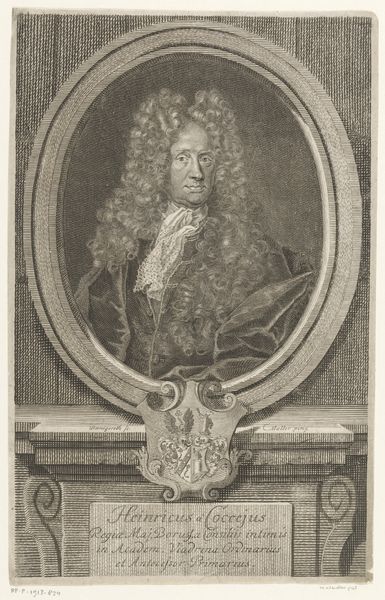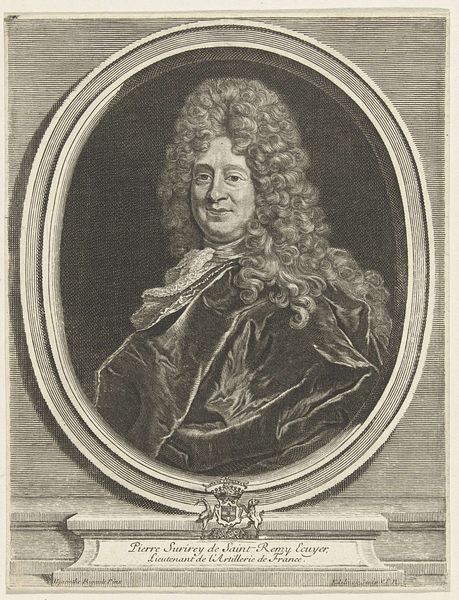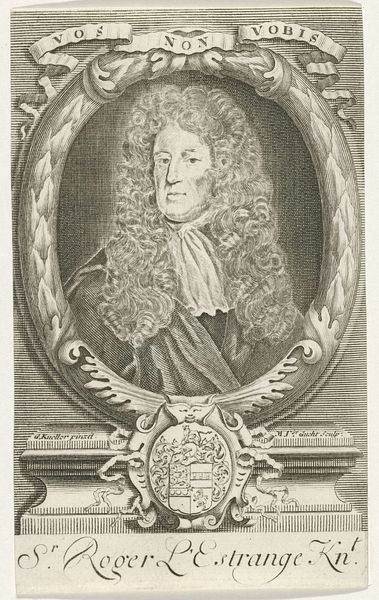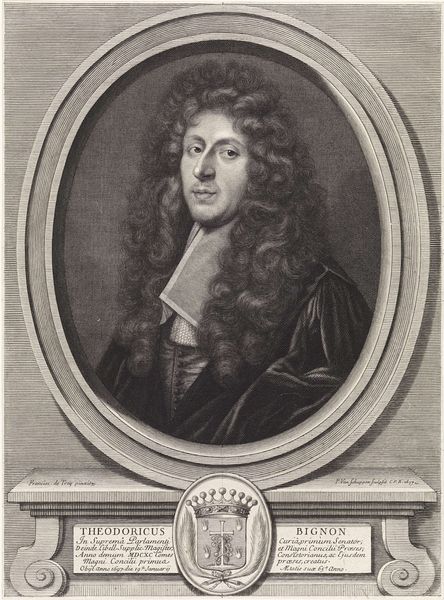
drawing, paper, ink, engraving
#
portrait
#
drawing
#
baroque
#
charcoal drawing
#
paper
#
ink
#
portrait drawing
#
engraving
Dimensions: height 256 mm, width 176 mm, height 325 mm, width 225 mm
Copyright: Rijks Museum: Open Domain
Curator: Good morning, we are looking at "Portret van Johann Caspar", a drawing by Pieter Schenk made sometime between 1700 and 1713, currently held in the Rijksmuseum. It's executed with ink, charcoal, and engraving on paper. Editor: Immediately, I notice how meticulously the image has been constructed, everything seems designed to express stature and importance. The subject seems carefully contained. Curator: The work captures Johann Caspar within the formal visual language of the Baroque era. We can view it through a lens of social power, as portraiture was predominantly reserved for the elite and served as a mechanism for projecting status. Editor: And those symbols reinforce that status. We see the man framed in an oval, elevated above a decorated base that incorporates a coat of arms and text. These are very typical of symbolic elements communicating status. Curator: Indeed, let's consider the social and political backdrop against which this piece was created. Caspar's identity is actively constructed, reinforcing a hierarchical society. The materials – ink and engraving – whilst accessible also nod to a world of skilled craftsmanship that few could afford to commission. Editor: It's fascinating how the artist uses line and shadow to suggest character. His gaze is somewhat melancholic and heavy, offset by the flamboyant wig. What meanings do you think we can draw from the curls, folds and flourishes so characteristic of this era? Curator: In terms of performance, the flamboyant attire can be understood as the performance of power itself. In certain critical interpretations, one might see an engagement with questions about societal expectation and enforced identity. We might examine ideas of masculinity as performative in the artwork too. Editor: Ultimately, this work seems to present an individual distilled through very specific period visual codes. The challenge seems to be understanding the intended and received symbolism. Curator: Agreed, viewing through both a historical lens and through symbolic examination really enables us to see the power at play. Editor: Absolutely. It certainly prompts thought about both past eras and how our contemporary visual culture projects symbolic values of power and identity.
Comments
No comments
Be the first to comment and join the conversation on the ultimate creative platform.
